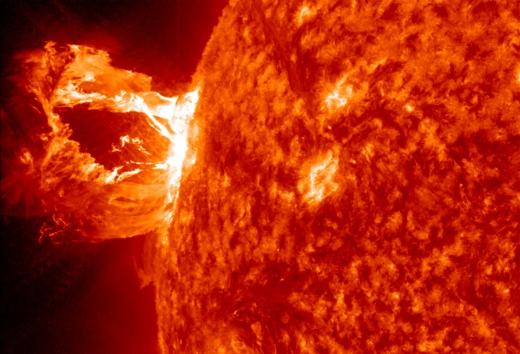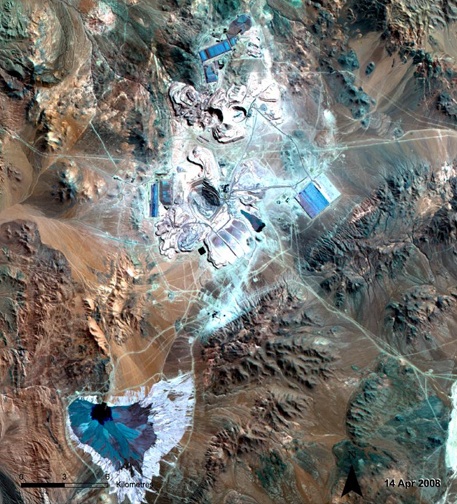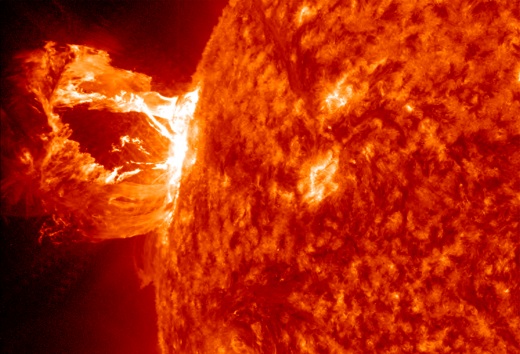
Solar flare. (Image by NASA/GSFC/SDO.)
If you’re like us, you’re totally burned out on all the absurd, disingenuous ways that marketers are trying to connect their wares to Earth Day. Perhaps part of the problem is that no one really knows what they’re talking about when they say they want to “save the Earth.” Save the Earth from what?
We’d have a better sense of our mission if we spent some time contemplating the threats. So in order to breathe some life back into the most worn-out secular holiday since Something on a Stick Day, we’ve decided to expand on Eric Roston’s list of ways the Earth could actually be destroyed. Know thine enemy!
1. Power grid destroyed by electromagnetic flux from the sun, taking our civilization back to the 19th century. Oh and all the nuclear power plants melt down.
This is a real thing that could happen tomorrow and yet who ever talks about it? I mean aside from NASA and the Department of Defense.
Basically the idea is that the sun could experience a geomagnetic storm so big that if the Earth were in its path, it would induce huge currents in our transmission grid, possibly blowing out so many transformers that it would literally take years for the grid to become operational again.
According to a study by Metatech corporation, a storm with a strength comparative to that of 1921 would destroy more than 300 transformers and leave over 130 million people without power, with a cost totaling several trillion dollars. A massive solar flare could knock out electric power for months.
If the grid really were toast, nuclear power plants that couldn’t be supplied with enough oil for backup generators would eventually melt down. Scientists say we are basically unprepared for what’s known as a Coronal Mass Ejection from the sun.
Solution: More science.
[R]esearchers don’t know what a thousand-year [solar] storm might look like; data on such dramatic events are pretty hard to come by. But [Mike Hapgood of the British research and technology agency RAL Space] says scientists could get a better idea by analyzing more data, including observations from a century or more ago.
2. Ye olde asteroid
Does this one even bear mentioning? Some of the worst action flicks ever made are about this eventuality, and we’re reasonably sure this is what finished off the dinosaurs. If a rock several miles across is headed for us, there’s little we can do — even blowing it up would simply break it into smaller pieces rather than change its trajectory.
Solution: Whatever they did in those terrible action movies. Or restart the Apollo program, launch a probe to intercept the asteroid, and then attach a rocket to it to divert it from its path. Whichever is easier.
3. Antibiotic resistance
This is by far the most preventable disaster out there. Here’s how Roston sums it up:
THREAT: Humanity loses its evolutionary arms race with infectious bacteria. The crisis begins with children needing more rounds of ever-stronger drugs to knock out common ailments, such as strep throat. Drug-resistant staph infections grow more numerous and serious. A reinvigorated Black Death returns?
Solution: Start policing the use of antibiotics in livestock, which are the breeding grounds for these superbugs. Also, more science, so we have yet more antibiotics in the drug development pipeline.
If you’d like more hair-raising tails of planetary doom, including the possibility of supervolcanoes and total ecosystem collapse, check out the full list at Bloomberg.



